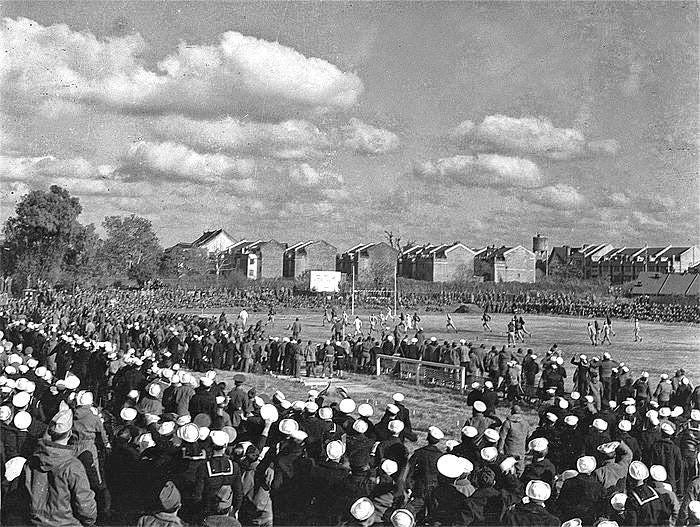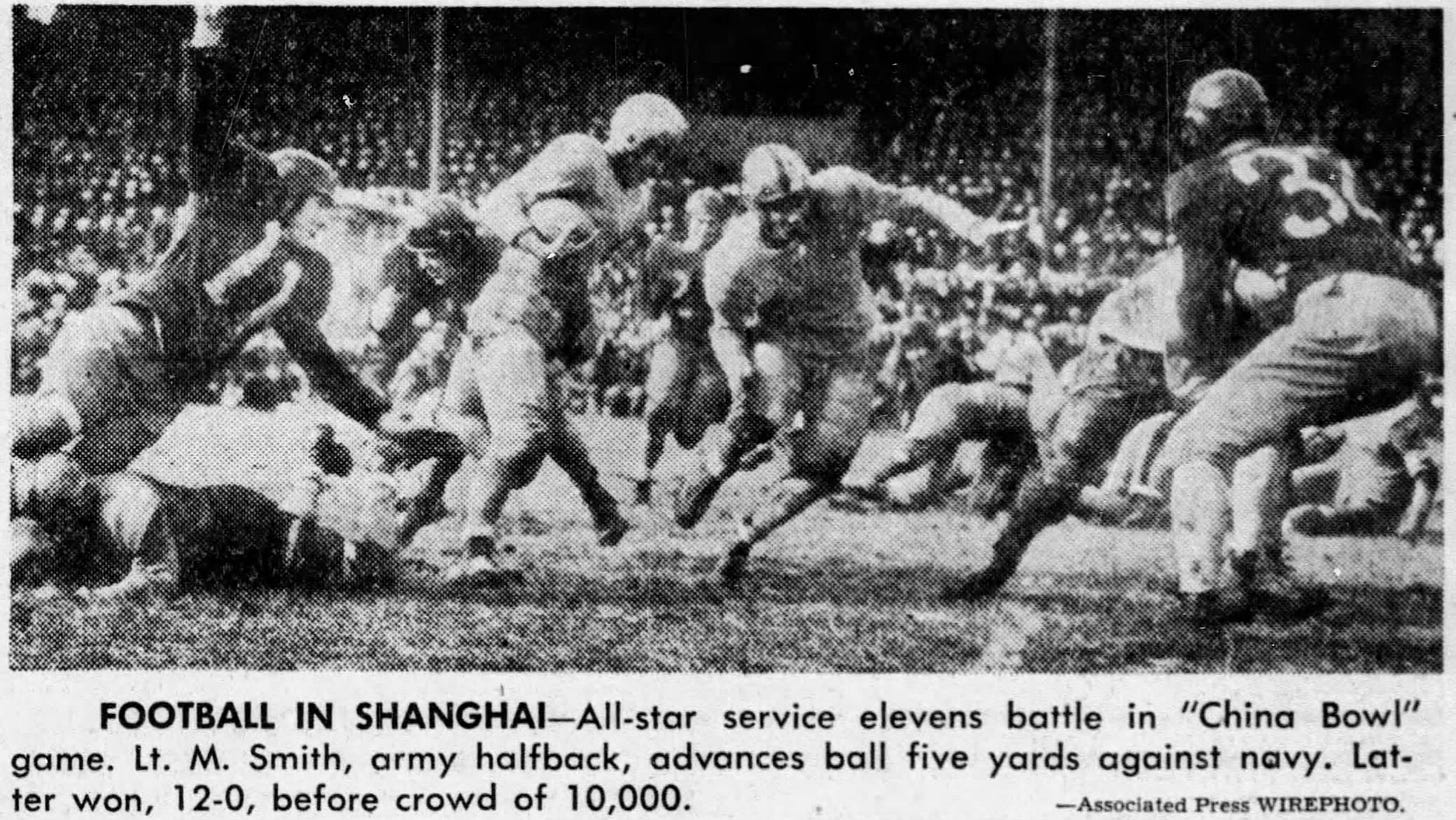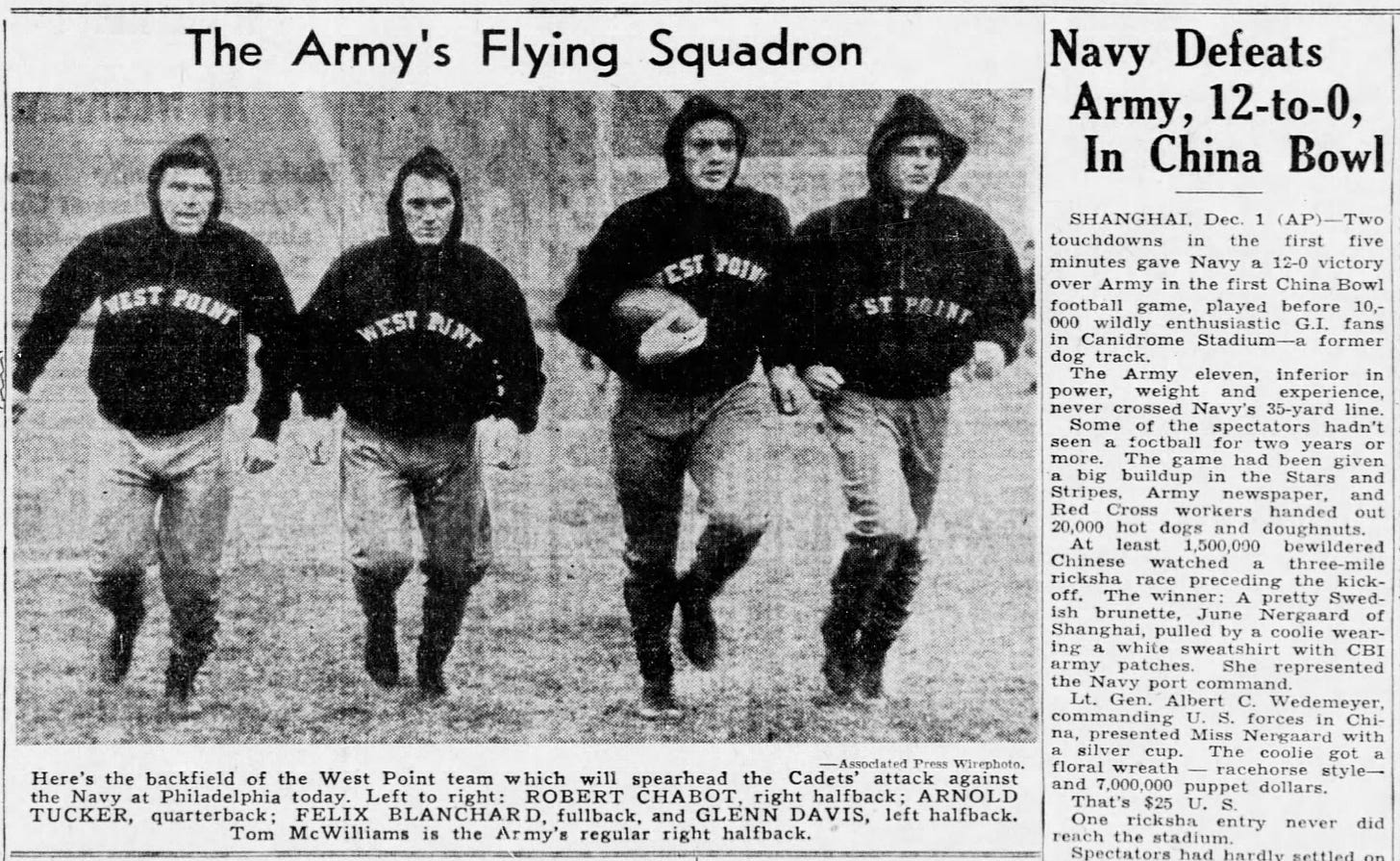Today's Tidbit... The 1945 Army-Navy China Bowl
First played in 1890, today saw the 124th football game between Army and Navy. More correctly, it was the 124th meeting between teams representing the United States Military Academy and the United States Naval Academy. Many teams representing navy ships, army bases, and military all-star teams have vied with one another over the years, with some military teams being among the best in the land during WWI and WWII. Besides being among the best in America, military teams were often the best football teams in foreign lands when they competed to bring a taste of America to service members stationed far from home.
One such game came in the aftermath of WWII, when teams representing the Army and Navy played in Shanghai on December 1, 1945, in what they billed as the China Bowl. Played earlier on the same day as the Army-Navy game in Philadelphia, they played in Shanghai's French Concession Canidrome. Built in the 1920s as a dog racing track, the Canidrome also hosted pre-war American football games between Shanghai-based Marines and American expats.
You might wonder why anyone felt the need to play football in Shanghai in December 1945, but the Japanese surrender in August left a power vacuum in China, which the U.S. tried filling by sending in 100,000 troops, primarily based in coastal cities like Shanghai. The troops, of course, wanted nothing more than to go home, but that wasn't in the cards, so their commanders thought a football game would be the next best thing.
The Navy team coach was Lt. Comdr. Swede Oberlander, a Dartmouth All-American who had been the line coach at Ohio State and head coach at Wesleyan. The core of the team included former major college football players based in China, and they supplemented their talent level by flying in 1943 All-American running back Bill Daley, whose base was in the Philippines. Daley played for Minnesota from 1940 to 1942 and spent the 1943 season with Michigan while assigned there for a Navy V-12 program. Thus, Daley had the distinction of playing for both sides in the Little Brown Jug game and winning all four contests.
Army's head coach was Lt. Alex Atty, a former West Virginia and Cleveland Rams player. He had hoped the rumors of Daley flying in were just rumors, but they weren't. So, while he also filled his roster with seasoned college players, his were smaller, slower, and not as good.
The morning of the game arrived as 10,000 GIs and sailors filled the stadium, delighting in the Red Cross serving 20,000 hot dogs and doughnuts. Some attendees had not seen a football game in two years, and they got at least a year's worth in the game's first five minutes.


Navy came out of the gate quickly when Joe Condrum, a former Lafayette player, scored from the 1-yard line, and former Rice fullback Charlie Eikenberg raced 45 yards for another touchdown. Navy missed both extra points, and Joe Daley played well for the Navy, but it did not matter. Neither team scored again as Army did not cross Navy's 35-yard line, and Navy sailed to a 12-0 victory
Since the China Bowl occurred in China, it was over in time to make the Saturday morning newspapers in the States, so those reading the paper at breakfast knew the China Bowl outcome while previewing the "real" Army-Navy game being played that afternoon.
Perhaps because the game between the academies occurred on the opposite side of the world, everyone should have expected the opposite outcome, and that is what the 103,000 fans in Philly witnessed. With WWI Army artilleryman Harry Truman in attendance, Army's Doc Blanchard scored three touchdowns, and his running mate Glenn Davis had two as Army marched to a 32-13 victory.
Back in Shanghai, the armed service that won the day lost the evening, so neither knew whether to consider the 24 hours a success or failure. Of course, Army walked away with the American collegiate national championship for 1945 while Navy stood tall as China's 1945 titleholders, and every service member had something to be happy about.
Football Archaeology is reader-supported. Click here to buy one of my books or otherwise support the site.



